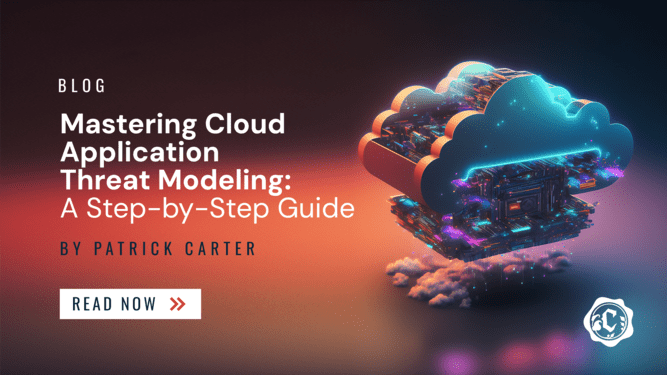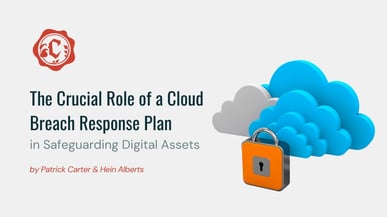Article contributed by Patrick Carter
In today's interconnected digital world, where cloud applications reign supreme, ensuring robust security measures is paramount. Cloud application threat modeling is a proactive approach to identifying potential security vulnerabilities and mitigating risks before they manifest into full-blown breaches. By systematically analyzing the components, data flows, and interactions within a cloud application ecosystem, organizations can bolster their security posture and safeguard sensitive data. In this comprehensive guide, we'll delve into the intricacies of cloud application threat modeling and outline a step-by-step approach to mastering this essential practice.
Understanding Cloud Application Threat Modeling
Before diving into the intricacies of threat modeling, it's crucial to understand its fundamental principles and objectives. Cloud application threat modeling involves the systematic identification, assessment, and mitigation of potential security threats and vulnerabilities within a cloud-based application ecosystem. The primary goals of threat modeling are to:
- Identify potential attack vectors and vulnerabilities.
- Assess the likelihood and impact of security threats.
- Prioritize security controls and countermeasures.
- Mitigate risks and enhance the overall security posture.
Step-by-Step Guide to Cloud Application Threat Modeling
Step 1: Define the Scope and Objectives
The first step in cloud application threat modeling is to define the scope and objectives of the exercise. This involves identifying the cloud-based application or system under consideration, as well as the specific goals of the threat modeling exercise. Key considerations include:
- Identifying the components and interactions within the application ecosystem.
- Defining the assets and data flows that need to be protected.
- Establishing the desired outcomes and objectives of the threat modeling exercise.
Step 2: Create a Threat Model Diagram
Once the scope and objectives have been defined, the next step is to create a threat model diagram. This diagram provides a visual representation of the various components, data flows, and trust boundaries within the application ecosystem. Key elements of the threat model diagram include:
- Application components (e.g., servers, databases, APIs).
- Data flows between components.
- External dependencies and interfaces.
- Trust boundaries and access controls.
Step 3: Identify Threats and Vulnerabilities
With the threat model diagram in place, the next step is to identify potential threats and vulnerabilities. This involves systematically analyzing each component and data flow within the application ecosystem to uncover potential security weaknesses. Common threats and vulnerabilities to consider include:
- Injection attacks (e.g., SQL injection, cross-site scripting).
- Authentication and authorization vulnerabilities.
- Data leakage and exposure risks.
- Denial of service attacks.
- Insider threats and privilege escalation.
Step 4: Assess Risks and Prioritize Controls
Once potential threats and vulnerabilities have been identified, the next step is to assess the risks associated with each and prioritize controls and countermeasures accordingly. This involves evaluating the likelihood and impact of each threat, as well as the effectiveness of potential security controls. Key considerations include:
- Likelihood of exploitation (e.g., frequency of occurrence, ease of exploitation).
- Impact on confidentiality, integrity, and availability of data.
- Cost-effectiveness and feasibility of implementing security controls.
Step 5: Implement Controls and Countermeasures
With a prioritized list of security controls and countermeasures in hand, the next step is to implement them within the application ecosystem. This may involve a combination of technical controls (e.g., encryption, access controls, intrusion detection systems) and procedural controls (e.g., security policies, employee training). Key considerations include:
- Implementing security best practices and industry standards.
- Integrating security controls into the development and deployment lifecycle.
- Regularly monitoring and updating security controls to address emerging threats.
Step 6: Validate and Iterate
The final step in the cloud application threat modeling process is to validate the effectiveness of implemented controls and iterate as necessary. This involves conducting regular security assessments, penetration testing, and vulnerability scanning to identify any gaps or weaknesses in the security posture. Key considerations include:
- Testing the resilience of the application ecosystem against simulated attacks.
- Analyzing security incidents and breaches to identify areas for improvement.
- Iteratively refining the threat model and security controls based on feedback and lessons learned.
Conclusion
Cloud application threat modeling is a critical practice for ensuring the security and resilience of cloud-based systems in today's digital landscape. By systematically identifying, assessing, and mitigating potential security threats and vulnerabilities, organizations can enhance their security posture and safeguard sensitive data from unauthorized access or disclosure. By following the step-by-step guide outlined in this article, organizations can master the art of cloud application threat modeling and proactively protect their critical assets in the cloud.
TAKE THE FIRST STEP IN TRANSFORMING YOUR CLOUD SECURITY PROGRAM
Schedule a time to connect with our team of leading experts for an assessment of your cloud security architecture.
For more cybersecurity tips, follow Cyderes on LinkedIn and Twitter.



